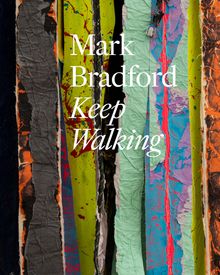| |||||||||||||||||||||||||
ARTIST MONOGRAPHS
|
|
STATUS: Forthcoming | 1/13/2026 This title is not yet published in the U.S. To pre-order or receive notice when the book is available, please email orders @ artbook.com |
 Mark Bradford: Keep Walking
Mark Bradford: Keep Walking
Published by Silvana Editoriale.
American artist Mark Bradford’s (born 1961) expansive practice is based on the dynamics of movement within the prism of racial identity. Through textured paintings, satirical videos and installations imbued with layers of history and social critique, he urges contemplation on the mobility of identity and societal frameworks.
PUBLISHER
Silvana Editoriale
BOOK FORMAT
Paperback, 6.75 x 9.5 in. / 152 pgs / 67 color.
PUBLISHING STATUS
Pub Date 5/27/2025
Active
DISTRIBUTION
D.A.P. Exclusive
Catalog: SPRING 2025 p. 150
PRODUCT DETAILS
ISBN 9788836656585 TRADE
List Price: $14.95 CAD $22.95
AVAILABILITY
In stock
in stock $14.95 Free Shipping UPS GROUND IN THE CONTINENTAL U.S. |
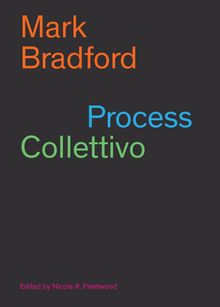 Mark Bradford: Process Collettivo
Mark Bradford: Process Collettivo
Published by Hauser & Wirth Publishers.
Edited with introduction by Nicole Fleetwood. Text by Asale Angel-Ajani, Elisabetta Grande, Mitchell Jackson, Jessica Lynne. Conversation between Mark Bradford and Liri Longo.
In 2017, American multidisciplinary artist Mark Bradford (born 1961) initiated a partnership with Rio Terà dei Pensieri, an Italian nonprofit working with two Venetian prisons. Through this collaboration, Process Collettivo was formed: an ongoing project that aims to increase employment opportunities within prisons and the city of Venice as a whole, while raising awareness about the political and environmental conditions that disproportionately affect marginalized populations. This eponymous volume provides extensive documentation of the project, including photos, testimonials by incarcerated people, and additional information about carceral systems and the people impacted by them.
Edited and with an introductory text by scholar Nicole Fleetwood, the book includes essays that contextualize Bradford’s project through analyses of Italian and American prisons, a reflection of creativity as an outlet for the incarcerated and a discussion of the history of social practice art. Process Collettivo also features a conversation between Bradford and former Rio Terà president Liri Longo, in which they reflect on the obstacles and successes of their joint venture.
PUBLISHER
Hauser & Wirth Publishers
BOOK FORMAT
Paperback, 6.5 x 9 in. / 168 pgs / 96 color / 2 bw.
PUBLISHING STATUS
Pub Date 5/28/2024
Active
DISTRIBUTION
D.A.P. Exclusive
Catalog: SPRING 2024 p. 88
PRODUCT DETAILS
ISBN 9783906915852 TRADE
List Price: $38.00 CAD $54.00
AVAILABILITY
In stock
in stock $38.00 Free Shipping UPS GROUND IN THE CONTINENTAL U.S. |
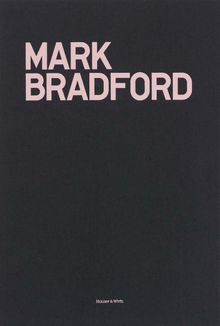 Mark Bradford: My Head Became a Rock
Mark Bradford: My Head Became a Rock
Published by Hauser & Wirth Publishers.
PUBLISHER
Hauser & Wirth Publishers
BOOK FORMAT
Clth, 9.75 x 14.25 in. / 18 pgs / 15 color.
PUBLISHING STATUS
Pub Date 12/26/2017
Out of stock indefinitely
DISTRIBUTION
D.A.P. Exclusive
Catalog: Publisher Backlist
PRODUCT DETAILS
ISBN 9783952363065 SDNR40
List Price: $100.00 CAD $132.50
AVAILABILITY
Not available
STATUS: Out of stock indefinitely. |
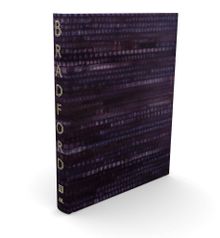 Mark Bradford: Tomorrow Is Another Day
Mark Bradford: Tomorrow Is Another Day
Published by Gregory R. Miller & Co..
Edited with text by Christopher Bedford, Katy Siegel. Text by Peter James Hudson, Anita Hill, Sarah Lewis, Katy Siegel, Zadie Smith, James Baldwin, W.E.B. DuBois. Interview by Christopher Bedford.
Mark Bradford’s exhibition for the US Pavilion at the 2017 Venice Biennale, titled Tomorrow Is Another Day, is born out of the artist’s longtime commitment to the inherently social nature of the material world. For Bradford, abstraction is not opposed to content; it embodies it. Finding materials for his paintings in the hair salon, Home Depot and the streets of Los Angeles, Bradford renews the traditions of abstract painting, demonstrating that freedom from socially prescribed representation is profoundly meaningful in the hands of a black artist.
Mark Bradford: Tomorrow Is Another Day is not only a catalog for Bradford’s pavilion project; it is a different kind of book, a substantial publication that blends the biographical with the historical and political. Essays from outside the art world—by Anita Hill, Peter James Hudson, W.E.B. Du Bois and Zadie Smith—narrate a series of interwoven stories about Reconstruction, civil rights and the vulnerable body in urban space, fleshed out with vivid archival photographs and documents. The book also includes significant new texts from curator Katy Siegel and art historian Sarah Lewis, as well as a revealing interview with Bradford, offering a new understanding of the work of one of today’s most influential contemporary artists.
Mark Bradford was born in 1961 in Los Angeles, where he lives and works. Best known for his large-scale abstract paintings that examine the class-, race- and gender-based economies that structure urban society in the United States, Bradford’s richly layered and collaged canvases represent a connection to the social world through materials. Bradford uses fragments of found posters, billboards, newsprint and custom-printed paper to simultaneously engage with and advance the formal traditions of abstract painting.
PUBLISHER
Gregory R. Miller & Co.
BOOK FORMAT
Hardcover, 9.5 x 11.75 in. / 230 pgs / 151 color.
PUBLISHING STATUS
Pub Date 6/27/2017
Out of stock indefinitely
DISTRIBUTION
D.A.P. Exclusive
Catalog: FALL 2017 p. 117
PRODUCT DETAILS
ISBN 9781941366141 TRADE
List Price: $60.00 CAD $79.00
AVAILABILITY
Not available
STATUS: Out of stock indefinitely. |
 Mark Bradford: Tears of a Tree
Mark Bradford: Tears of a Tree
Published by Verlag für moderne Kunst.
Foreword by Larys Frogier. Text by Clara M. Kim, Doryun Chong.
PUBLISHER
Verlag für moderne Kunst
BOOK FORMAT
Hardcover, 10 x 14.75 in. / 148 pgs / illustrated throughout.
PUBLISHING STATUS
Pub Date 1/26/2016
Out of print
DISTRIBUTION
D.A.P. Exclusive
Catalog: FALL 2015 p. 178
PRODUCT DETAILS
ISBN 9783903004030 FLAT40
List Price: $55.00 CAD $72.50
AVAILABILITY
Not available
STATUS: Out of print | 00/00/00 For assistance locating a copy, please see our list of recommended out of print specialists |
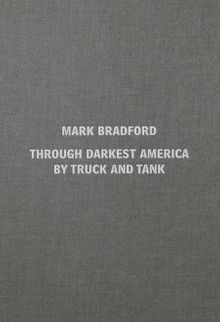 Mark Bradford: Through Darkest America by Truck and Tank
Mark Bradford: Through Darkest America by Truck and Tank
Published by White Cube.
Edited by Susan May, Honey Luard. Text by Christopher Bedford, Mark Bradford, Susan May.
PUBLISHER
White Cube
BOOK FORMAT
Clth, 8.75 x 12.5 in. / 160 pgs / 103 color.
PUBLISHING STATUS
Pub Date 4/30/2014
Out of stock indefinitely
DISTRIBUTION
D.A.P. Exclusive
Catalog: FALL 2014 p. 128
PRODUCT DETAILS
ISBN 9781906072780 FLAT40
List Price: $45.00 CAD $60.00
AVAILABILITY
Not available
STATUS: Out of stock indefinitely. |
 Mark Bradford: Merchant Posters
Mark Bradford: Merchant Posters
Published by Gregory R. Miller & Co./Aspen Art Press.
Text by Malik Gaines, Ernest Hardy, Philippe Vergne, Heidi Zuckerman Jacobson.
PUBLISHER
Gregory R. Miller & Co./Aspen Art Press
BOOK FORMAT
Hardcover, 11 x 9 in. / 160 pgs / 100 color.
PUBLISHING STATUS
Pub Date 3/31/2010
Active
DISTRIBUTION
D.A.P. Exclusive
Catalog: SPRING 2010 p. 55
PRODUCT DETAILS
ISBN 9780980024227 TRADE
List Price: $50.00 CAD $67.50 GBP £45.00
AVAILABILITY
In stock
in stock $50.00 Free Shipping UPS GROUND IN THE CONTINENTAL U.S. |
